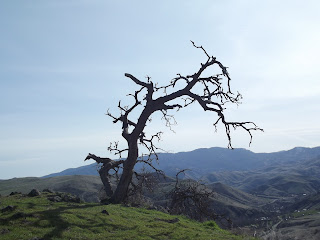Hiking is one of the best ways to get outside. It might seem
like it’s just walking, but actually there’s a little more to it. Before you go
out on a hike, it’s important to be prepared.
The first thing you need to do, of course, is decide where
you’re going. You should get a map of
the trail. This is really helpful
because it tells you how far you will go, and if the trail branches, it can
tell you which way you should go.
Another great thing about having a map is that you can use it to know
exactly where you are on the trail, just in case there’s an emergency.
 |
| There are a lot of great sights to see while you're hiking |
Speaking of emergencies, you should always tell someone
where you’re going and when you plan to be back. You also want to make sure you have the right gear. This would be appropriate hiking shoes or
boots and appropriate clothing (including some extra clothes, just in case it’s
colder than you expect or something happens to the clothes you’re wearing – I
once slid down a muddy hillside and didn’t have any extra clothes, which kind
of ruined the rest of the day). You’ll
also want to bring food and water, a first aid kit, a compass along with your
map (if you’re in the woods, a GPS might not always work), a flashlight, a
whistle, and a knife or some other similar tool. There are some more suggestions, as well as reasons why these
ones are important, at http://www.americanhiking.org/resources/10essentials/.
 |
| Don't forget to take pictures! |
Most of the time, you’ll be fine and won’t run into any
problems. Even on these hikes, though, it is important to have these things
along.
You’ll also want to brush up on your hiking etiquette before
you head out on the trail. It’s pretty
simple. Basically, don’t be too loud
and don’t block the trail. If you need
a rest, pick a spot where you can get off the trail so that others can get past
you. One of the most important things
to me is: don’t litter. When people are
hiking, the last thing they want to see is your plastic bottles and
wrappers. Besides that, you never want
to throw away something that can hold water, especially if you’re going on a
long hike. You might run out of the
water you brought and have to purify some more, but that won’t help you if you
don’t have anything to carry it in. The
website, http://www.americanhiking.org/resources/hiking-etiquette/,
has more etiquette standards that you might want to check out.
Hiking is a fantastic pastime, and I highly recommend
it. You just need to be aware and be
responsible.






















